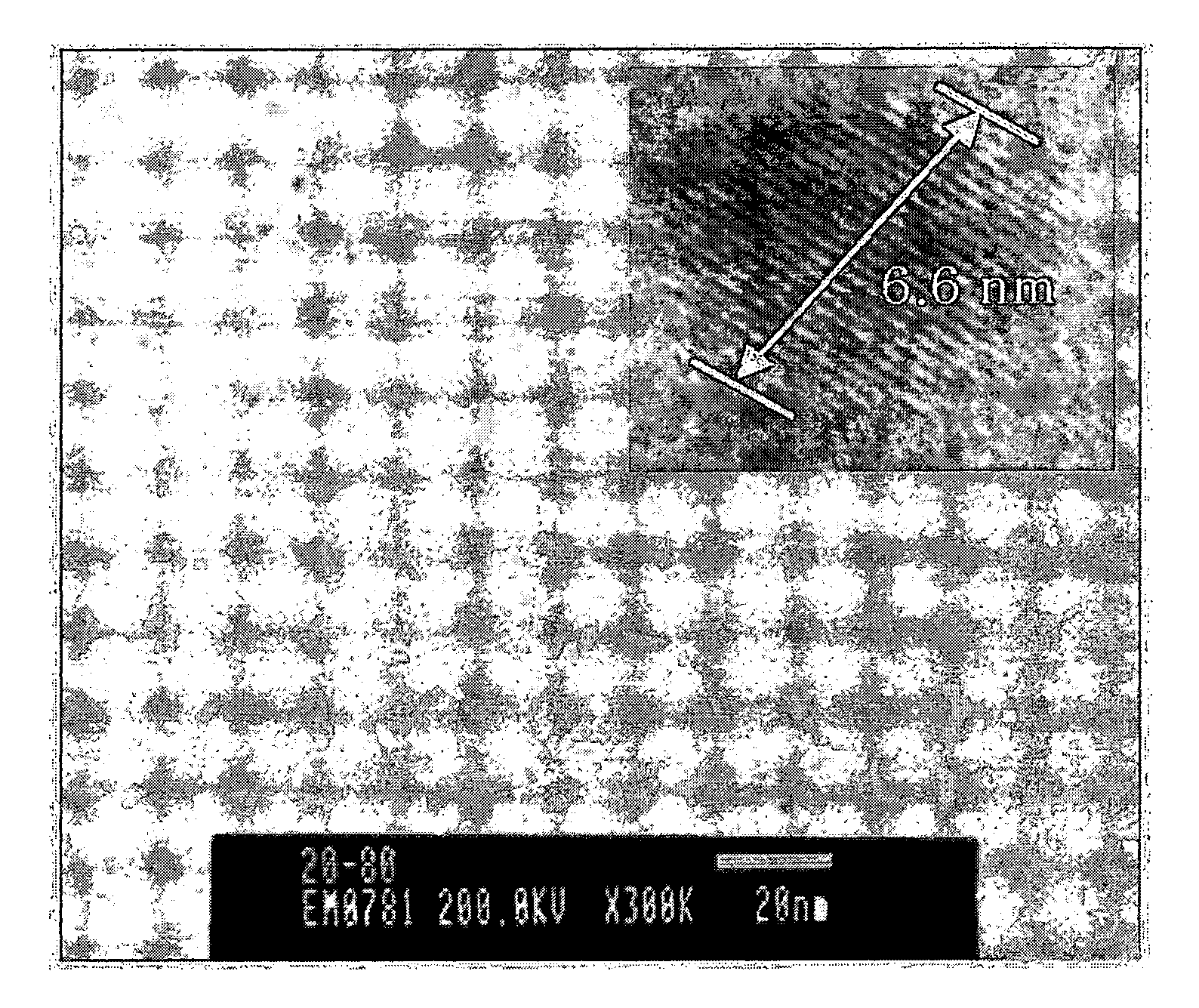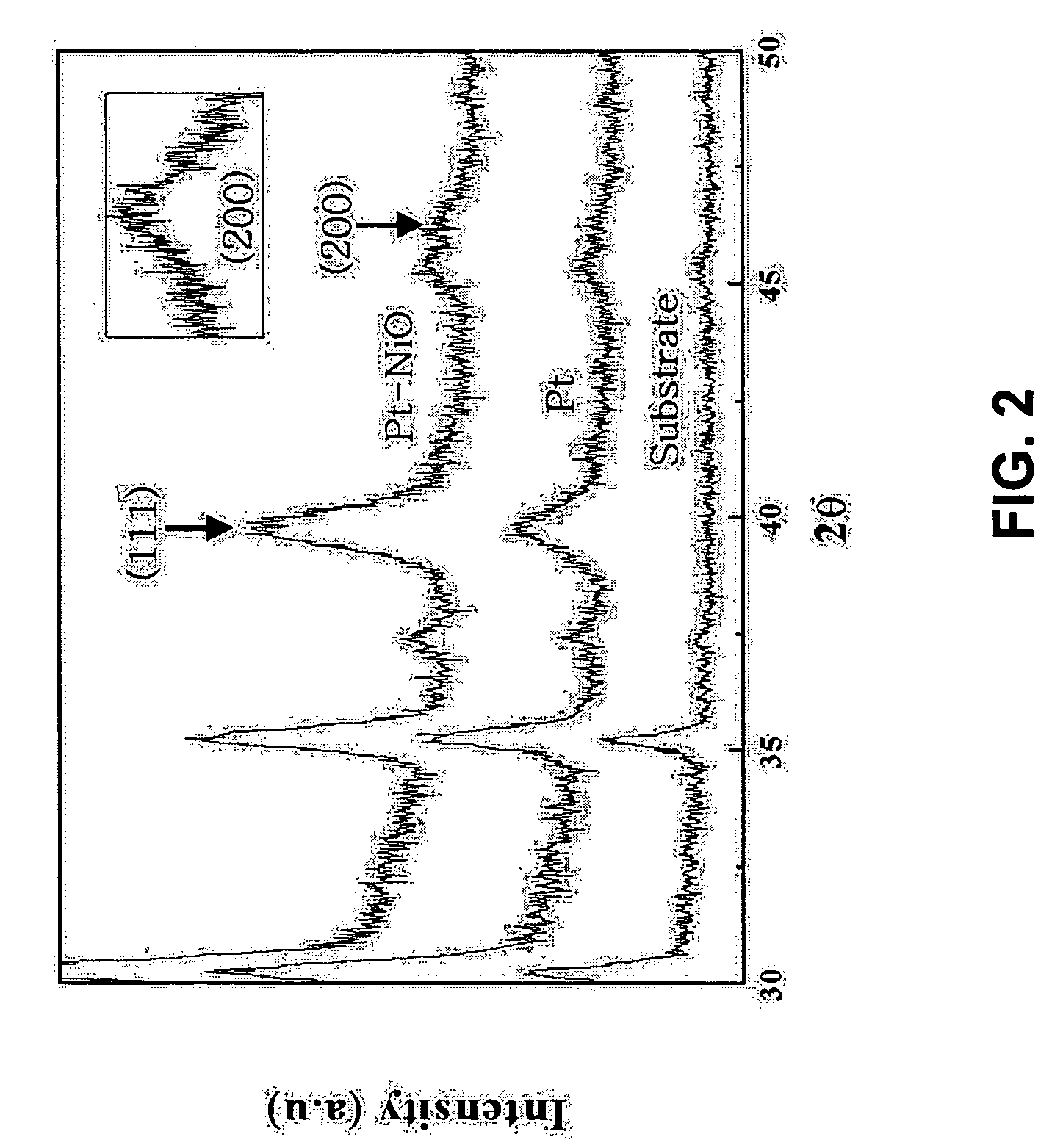Method for fabricating Pt-MOx nanophase electrodes for highly efficient dye-sensitiized solar cell
- Summary
- Abstract
- Description
- Claims
- Application Information
AI Technical Summary
Benefits of technology
Problems solved by technology
Method used
Image
Examples
example 1
Fabrication of Platinum-Nickel Oxide (Pt—NiO) Counter Electrode
[0032] In this example, an electrode comprising nanocrystalline platinum and amorphous nickel oxide deposited on a surface of a substrate was fabricated using a co-sputtering system (RF magnetron sputtering system, Samwon Vacuum Co., Ltd., Korea) under Ar atmosphere. A glass plate coated with fluorine-doped tin oxide (SnO2) during evaporation was used as a substrate. Where a platinum target was arranged in the center of a chamber, and a nickel oxide target was arranged at one side of the chamber, RF powers of 30 W and 40 W were applied for 2 minutes to evaporate the two targets, respectively. In order to prepare a test piece for the transmission electron microscope (TEM) and transmission electron diffraction measurements of the electrode, a Cu grid was added to the substrate during evaporation. In addition, in order to compare the characteristics of the platinum-nickel oxide, a platinum electrode was fabricated using th...
example 2
Fabrication of Platinum-Titanium (Pt—TiO2) Counter Electrode
[0036] In this example, an electrode comprising nanocrystalline platinum and amorphous titanium oxide deposited on the surface of a substrate was fabricated using the same system employed in as Example 1 under Ar atmosphere. Since the electrode was fabricated using the titanium oxide having a high refractive index, it exhibited a high reflectance. This improvement in reflectance causes the excitation of a dye and thus increases the efficiency of a solar cell to be manufactured. The principle is explained in FIG. 6.
[0037] A glass plate coated with fluorine-doped tin oxide (SnO2) during evaporation was used as a substrate. Where a platinum target was arranged in the center of a chamber, and a titanium oxide target was arranged at one side of the chamber, RF powers of 20 W and 80 W were applied for 2 minutes to evaporate the two targets, respectively. In order to prepare a test piece for the transmission electron microscope ...
PUM
 Login to View More
Login to View More Abstract
Description
Claims
Application Information
 Login to View More
Login to View More - R&D
- Intellectual Property
- Life Sciences
- Materials
- Tech Scout
- Unparalleled Data Quality
- Higher Quality Content
- 60% Fewer Hallucinations
Browse by: Latest US Patents, China's latest patents, Technical Efficacy Thesaurus, Application Domain, Technology Topic, Popular Technical Reports.
© 2025 PatSnap. All rights reserved.Legal|Privacy policy|Modern Slavery Act Transparency Statement|Sitemap|About US| Contact US: help@patsnap.com



